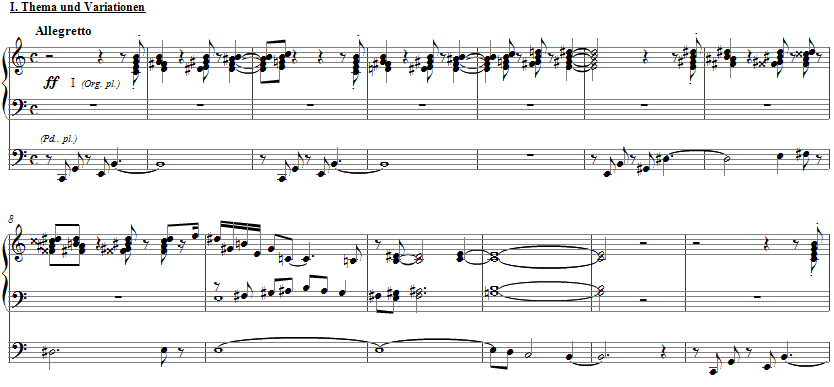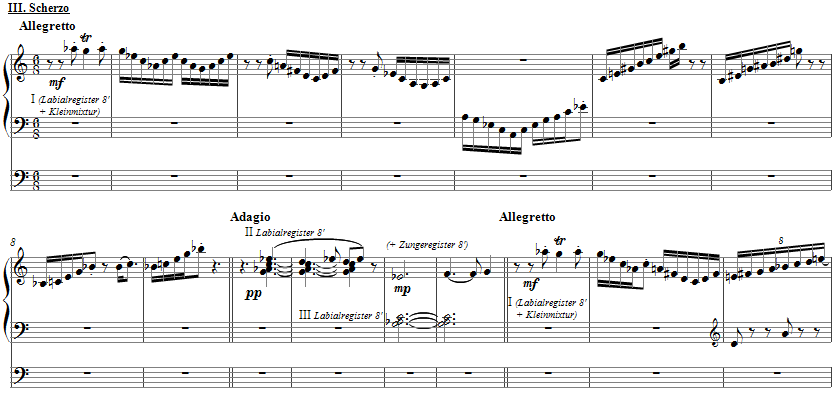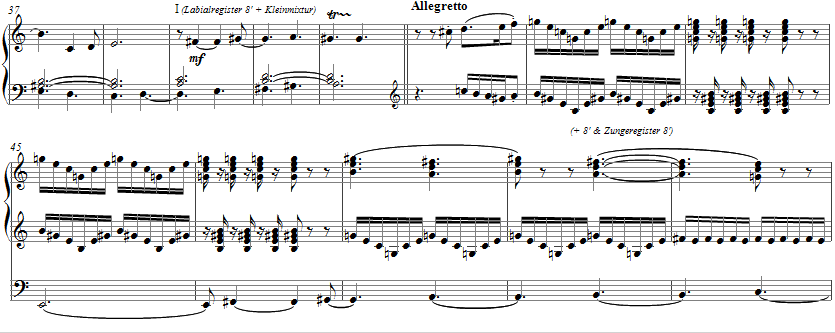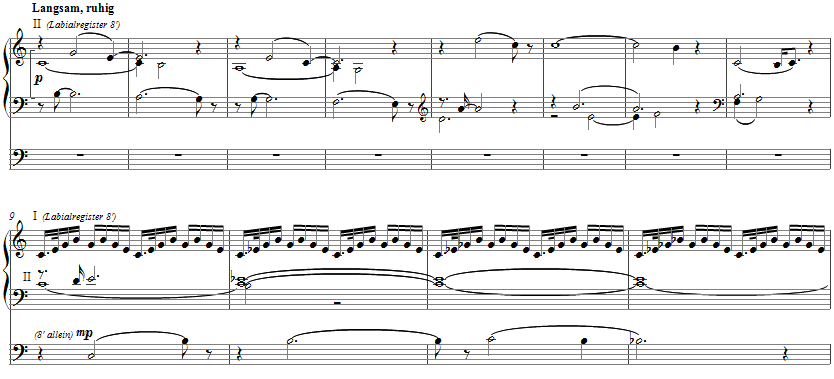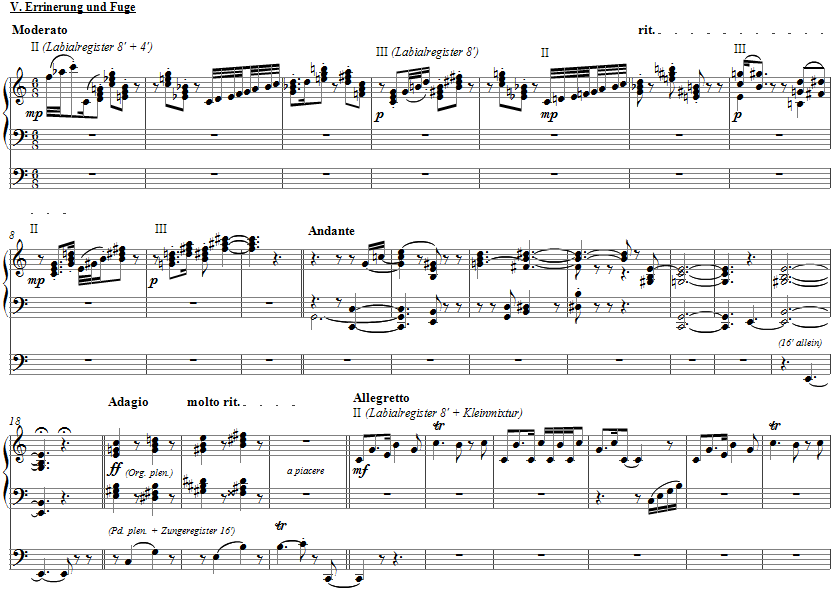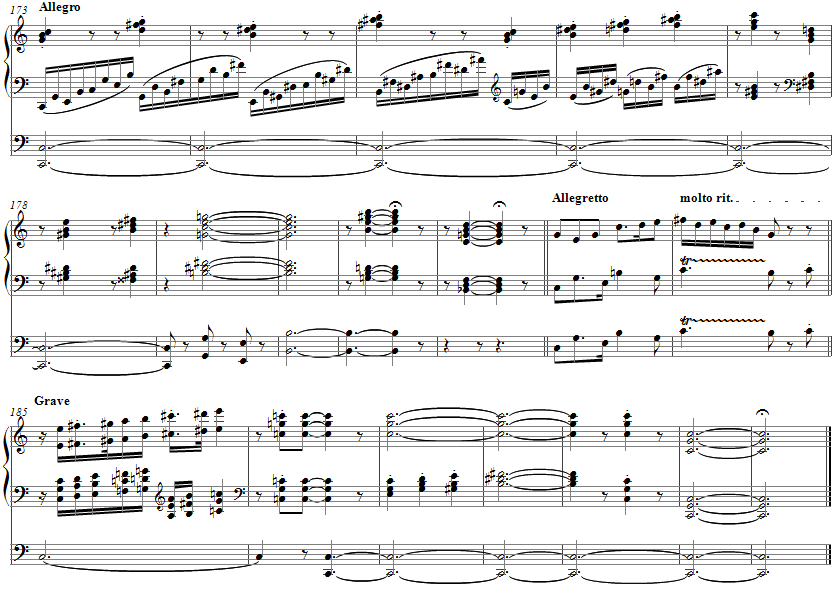Music and Texts of GARY BACHLUND
Vocal Music | Piano | Organ | Chamber Music | Orchestral | Articles and Commentary | Poems and Stories | Miscellany | FAQs
Sinfonie für Orgel - (2013)
Andreas Sieling gewidmet
The title and movement names are German, for having completed this symphony for organ in Berlin, with the fine organist of the Berliner Dom and its historic Sauer Orgel in my thoughts.
i. Thema und Variationen
The opening statement in the pedal -- C, G, E, B -- is mirrored in the manuals by derivation of the four major seven chords related to C, and then further stated in the mediant major, the second tonal center of the symphony. The theme in its melodic and harmonic implications is then varied throughout the movement.
ii. Elegie
E minor yields to C minor, enharmonically spelled, as the other notes of the theme are stated in the pedal for this elegiac moment as a rhythmic and tempo contrast ending with the mediant of C emphasized.
iii. Scherzo
A further development of the theme speaks in snippets of runs and then polytonal harmonies over a theme in the pedal.
After the single line runs up and down the keyboard, the pedal takes up in the mediant of the symphony's tonic.
iv. Meditation
The C major seven returns in response to the lingering on the mediant in the scherzo. Now the four-note major seven chord compacts to minors and then diminished seven chords as a pedal line sung out in an 8' voice. Following the harmonic development, the theme moves into the lowered supertonic and beyond, before a return to C. For this meditation available separately as a PDF, click here.
v. Erinnering und Fuge
A remembrance of the scherzo's textures and displacement of triads with intervening runs leads to a gentle cadence on the mediant once again, before the theme in complex related chords thunders out its reaffirmation of the tonic, the pedal joining with its cadenza-like trill. The fugue subject derived from the theme of the symphony is then stated alone, before answers in the related tonal domains as suggested by the theme.
After the harmonic complexity of the fugue, a coda restates the harmonies based on the overall theme and final recall of the head motive of the fugue is answered by the confluence of tonic and mediant before the last chords in full organ, open fifths at the end stripping away all the harmonic content at last.
The score is available as a free PDF download, though any major commercial performance or recording of the work is prohibited without prior arrangement with the composer. Click on the graphic below for this organ score.
